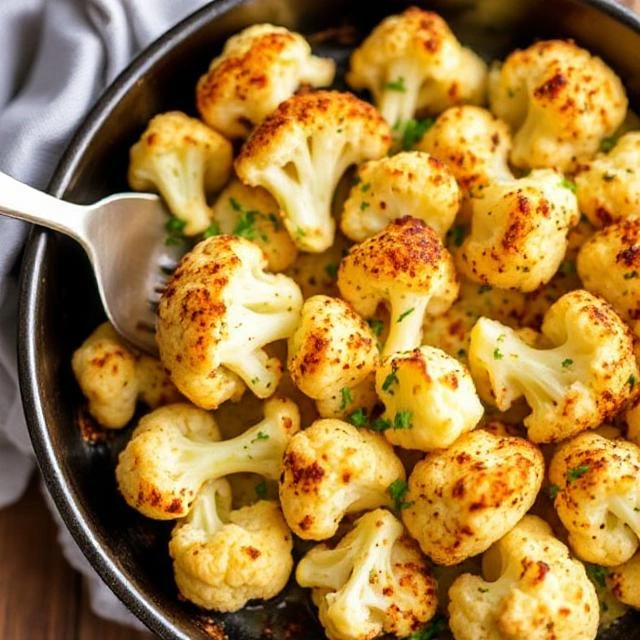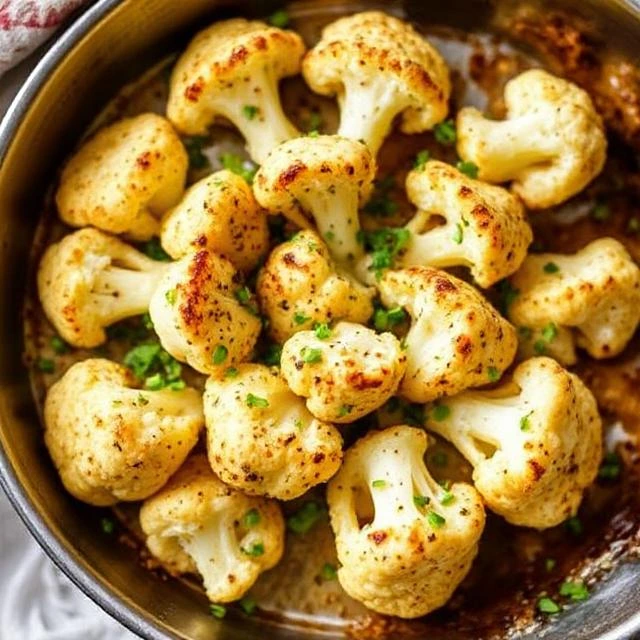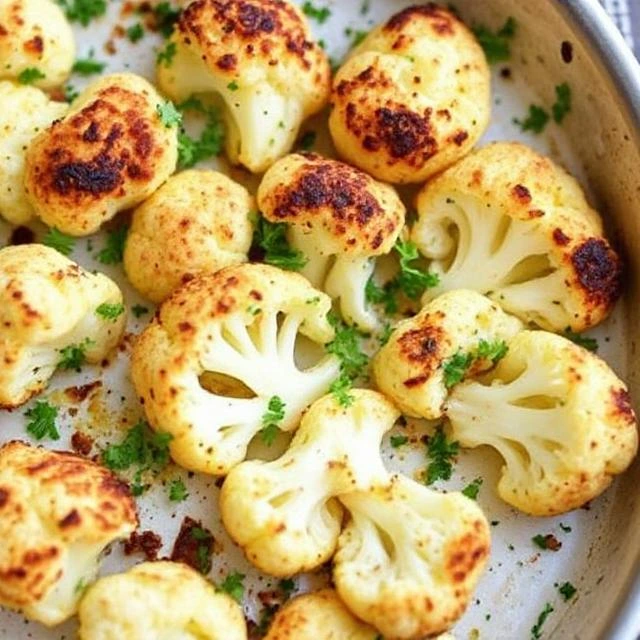Introduction: Why Baked Cauliflower Deserves a Spot on Your Table
Once relegated to bland side dishes, cauliflower has undergone a culinary renaissance. Roasting transforms this humble cruciferous vegetable into a caramelized, crispy, and deeply flavorful masterpiece. Whether you’re a health enthusiast, a plant-based eater, or a home chef seeking versatility, baked cauliflower perfection is achievable with the right techniques. This guide dives into the science of roasting, creative recipe twists, and actionable SEO tips to make your content stand out.
Chapter 1: The Science of Perfectly Baked Cauliflower
1.1 Why Cauliflower Roasts So Well
- Caramelization Magic: Natural sugars in cauliflower (like glucosinolates) caramelize at high heat, creating nutty, umami-rich flavors.
- Texture Contrast: Proper roasting yields crispy edges and tender interiors.
- Nutrition Boost: Baking preserves more nutrients than boiling. According to Healthline, cauliflower is rich in vitamin C, fiber, and antioxidants.
1.2 Choosing the Right Cauliflower
- Fresh vs. Frozen: Fresh heads offer better texture; frozen works for quick meals (pat dry to avoid sogginess).
- Color Varieties: Try orange (beta-carotene), purple (anthocyanins), or romanesco (fractal beauty) for visual appeal.
1.3 Essential Tools
- Baking Sheets: Heavy-duty, rimmed pans (like Nordic Ware) prevent warping.
- Parchment Paper: Ensures even cooking and easy cleanup.

Chapter 2: The Core Recipe – Classic Baked Cauliflower
2.1 Ingredients
- 1 large cauliflower head, cut into florets
- 3 tbsp olive oil or avocado oil
- 1 tsp garlic powder
- 1 tsp smoked paprika
- ½ tsp turmeric (anti-inflammatory boost)
- Salt and pepper to taste
- Optional: Parmesan, lemon zest, or fresh herbs
2.2 Step-by-Step Method
- Prep the Cauliflower: Remove leaves, slice stem, and break into even-sized florets.
- Dry Thoroughly: Pat with paper towels—moisture is the enemy of crispiness.
- Season: Toss florets with oil and spices. For extra crunch, add 1 tbsp cornstarch.
- Roast: Spread on a parchment-lined sheet. Bake at 425°F (220°C) for 25–30 minutes, flipping halfway.
Pro Tip: For golden-brown edges, avoid overcrowding the pan.
Chapter 3: Next-Level Variations
3.1 Global Flavors
- Mediterranean: Add olives, capers, and feta post-roasting.
- Indian-Spiced: Toss with garam masala and serve with mint chutney.
- Buffalo Style: Drizzle with hot sauce and pair with vegan ranch.
3.2 Dietary Adaptations
- Keto: Use grated Parmesan for a “crust.”
- Vegan: Substitute nutritional yeast for cheese.
- Low-FODMAP: Skip garlic and use chive-infused oil.
3.3 Cauliflower Steaks
- Cutting Technique: Slice head into 1-inch-thick steaks.
- Marinate: Brush with balsamic glaze or tahini before roasting.
Chapter 4: Serving & Pairing Ideas
4.1 Standalone Dishes
- Cauliflower “Wings”: Serve with blue cheese dip and celery sticks.
- Grain Bowls: Layer over quinoa, chickpeas, and roasted red peppers.
4.2 Complementary Sides
- Proteins: Pair with lemon-herb salmon or grilled tofu.
- Grains: Couscous, farro, or wild rice.
4.3 Wine & Drink Pairings
- White Wine: Sauvignon Blanc cuts through richness.
- Craft Beer: Try a citrusy IPA with spicy cauliflower bites.

Chapter 5: Troubleshooting Common Issues
5.1 Soggy Cauliflower
- Cause: Excess moisture or overcrowded pans.
- Fix: Roast at higher temps (450°F) and use convection mode if available.
5.2 Burnt Edges
- Cause: Uneven sizing or too-thin florets.
- Fix: Cut uniform pieces and check oven calibration with an oven thermometer.
Chapter 6: The Health Angle – Why Cauliflower Wins
6.1 Nutritional Breakdown
- Fiber: Supports gut health (2.5g per cup).
- Choline: Crucial for brain function.
- Sulforaphane: A cancer-fighting compound studied by Johns Hopkins Medicine.
6.2 Meal Prep & Storage
- Refrigerate: Store in airtight containers for up to 4 days.
- Freeze: Blanch florets before freezing to preserve texture.
Conclusion: Elevate Your Culinary Game
Baked cauliflower is more than a trend—it’s a versatile, nutrient-dense canvas for creativity. With this guide, you’ll craft dishes that delight palates and rank high on search engines. Share your creations with #BakedCauliflowerPerfection and watch your food blog thrive!

FAQs for Baked Cauliflower Perfection
Q1: How do I make crispy baked cauliflower?
A: Achieve crispiness by:
- Drying florets thoroughly before seasoning.
- Tossing with cornstarch (1 tbsp per head) for extra crunch.
- Roasting at high heat (425°F/220°C) on a single layer without overcrowding.
- Flipping halfway through cooking for even browning.
Q2: Can I use frozen cauliflower instead of fresh?
A: Yes! Thaw frozen florets completely, pat them dry with paper towels to remove excess moisture, and roast at 425°F (220°C) for 25–30 minutes. Note: Fresh cauliflower yields crisper results.
Q3: Why does my baked cauliflower turn soggy?
A: Common causes:
- Overcrowded pans (steam traps moisture).
- Undried florets (water prevents crisping).
- Low oven temp (use 425°F or higher).
Fix: Spread florets in a single layer and check oven calibration with a ThermoWorks thermometer.
Q4: What seasoning variations work best?
A: Try these combos:
- Lemon-Pepper: Zest + black pepper.
- Taco Style: Chili powder + cumin.
- Herbaceous: Rosemary + thyme.
- Umami Boost: Nutritional yeast + garlic powder.
Q5: How do I make this recipe vegan or gluten-free?
A:
- Vegan: Skip Parmesan; use nutritional yeast.
- Gluten-Free: Ensure cornstarch is certified GF.
- Oil-Free: Mist florets with vegetable broth instead.
Q6: Can I prep baked cauliflower ahead of time?
A: Yes! Prep florets up to 24 hours in advance:
- Cut and dry cauliflower.
- Store in an airtight container in the fridge.
- Season and roast just before serving.